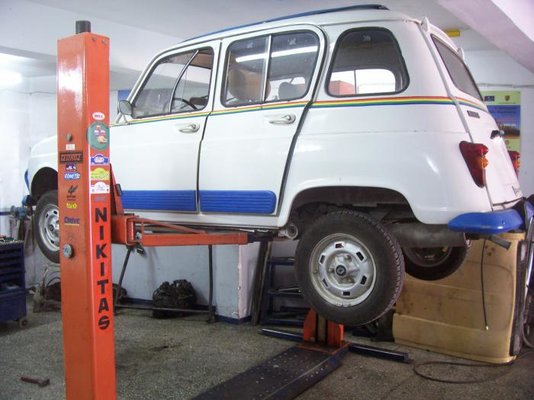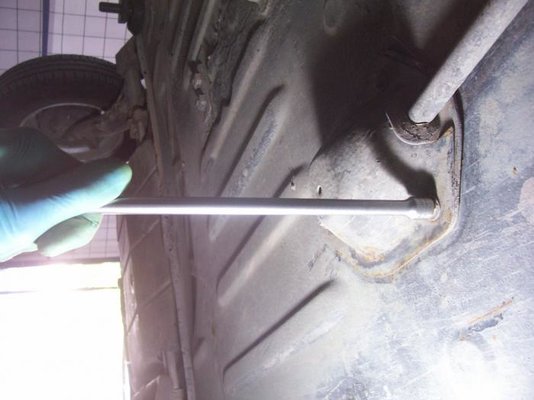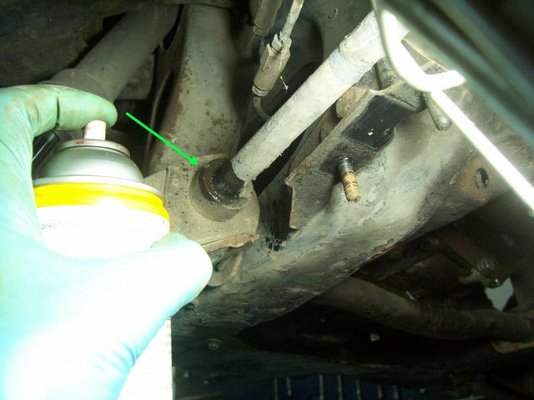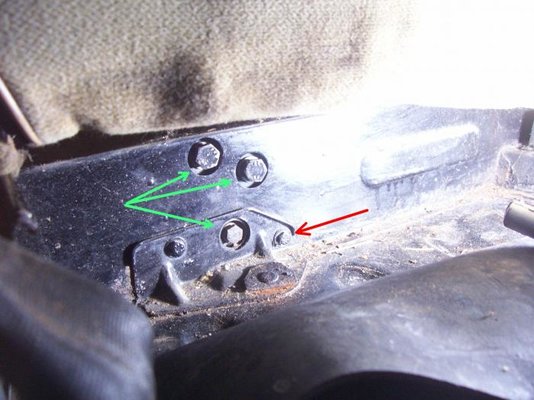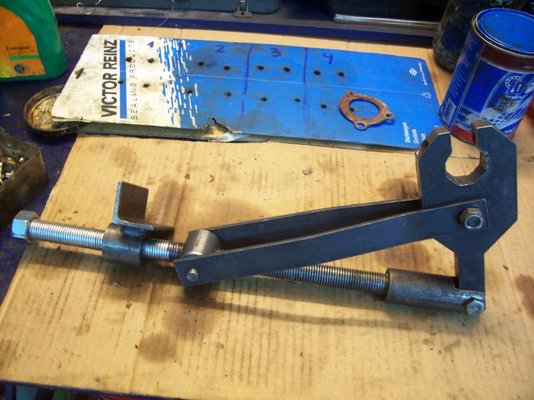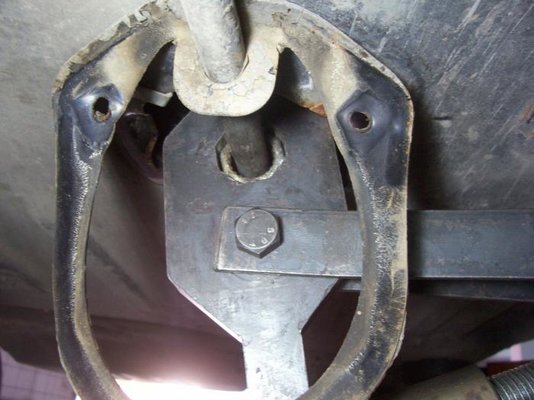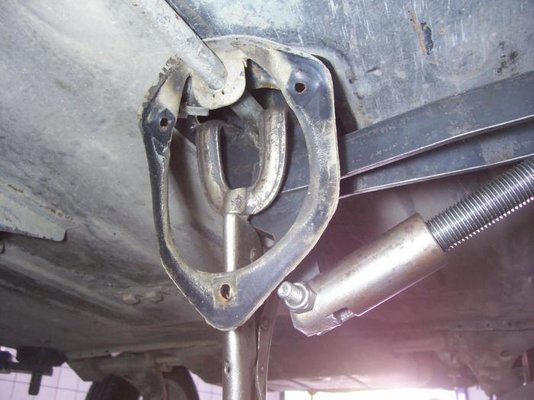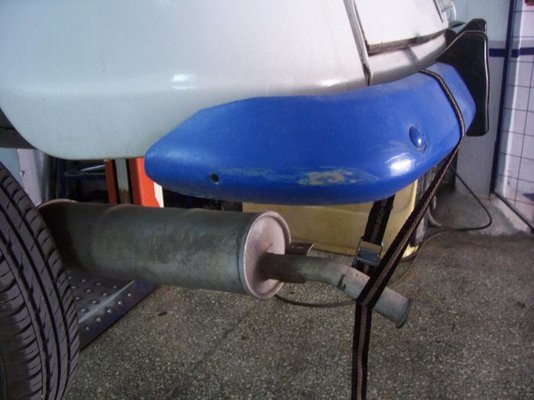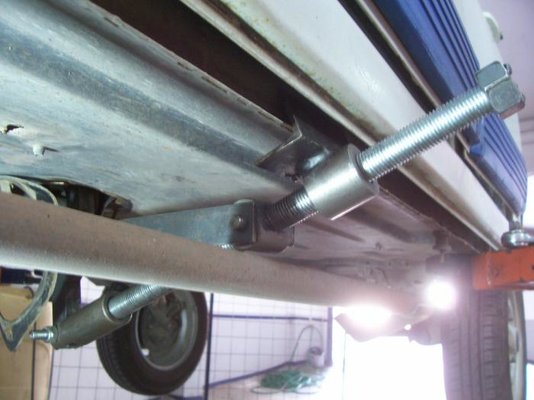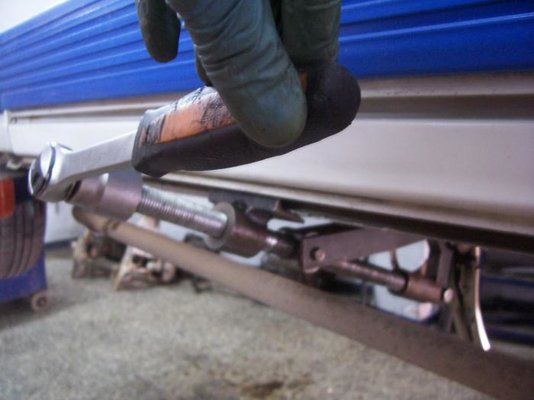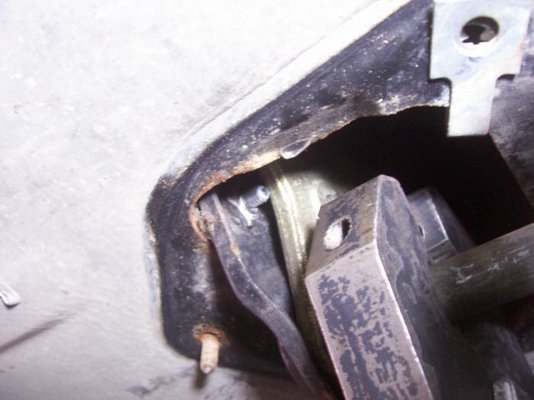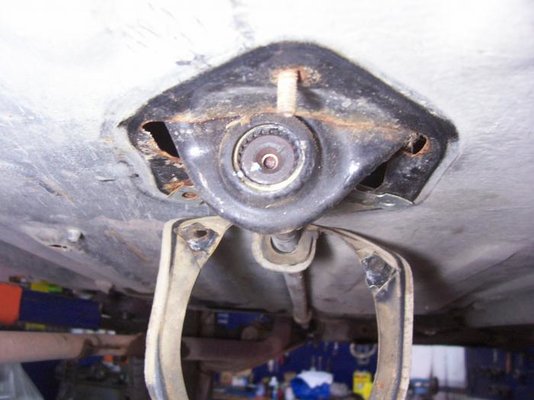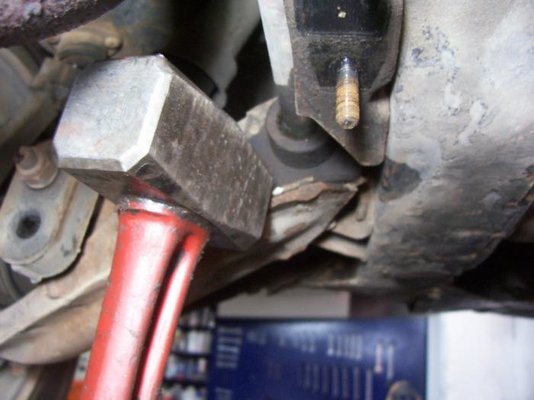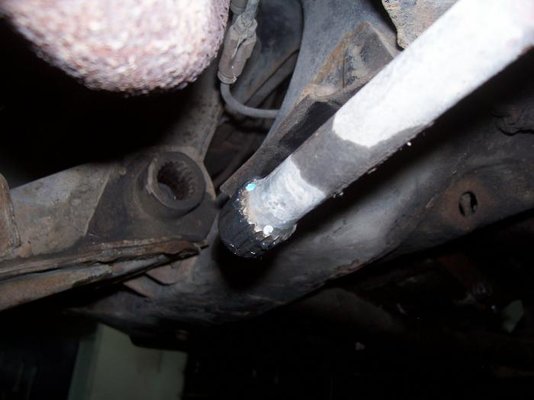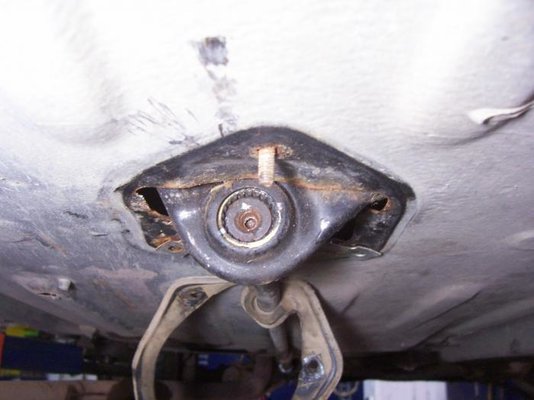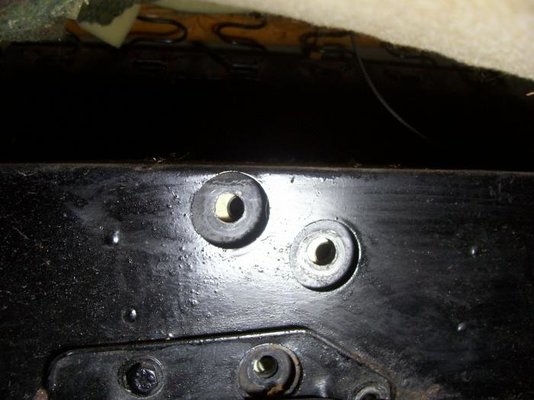angel
Enthusiast
- Messages
- 2,444
- Location
- Athens, Greece
The Jogging will have to make it through rough terrain this week, loaded, and was running a little low up front, so the ride height had to be reset.
I decided to set them according to the standard setting (H3=41mm). Normally it should be 5mm lower (H3=46mm) as it's fitted with tripod inner driveshaft joints., but as it is going to be loaded, the suspension would sag anyway, so inner joints will still be in a safe working angle.
After measuring it on a level floor, I noted the following:
LH wheel: RH wheel
H1=260 mm H1=260mm
H2=203 mm H2=207mm
H3=57mm H3=53mm
So it needed correcting by 16mm at the left wheel, and 12mm at the right wheel.
I decided to do a photo how-to of this procedure...
First of all, car needs to be raised so that the front wheels are off the ground. I have the luxury of a two-post lift, but raising it on axle stands works equally well.
The first step is to remove the torsion bar anchor lever cover (10mm spanner). The rear nut will need some penetrating fluid.
I decided to set them according to the standard setting (H3=41mm). Normally it should be 5mm lower (H3=46mm) as it's fitted with tripod inner driveshaft joints., but as it is going to be loaded, the suspension would sag anyway, so inner joints will still be in a safe working angle.
After measuring it on a level floor, I noted the following:
LH wheel: RH wheel
H1=260 mm H1=260mm
H2=203 mm H2=207mm
H3=57mm H3=53mm
So it needed correcting by 16mm at the left wheel, and 12mm at the right wheel.
I decided to do a photo how-to of this procedure...
First of all, car needs to be raised so that the front wheels are off the ground. I have the luxury of a two-post lift, but raising it on axle stands works equally well.
The first step is to remove the torsion bar anchor lever cover (10mm spanner). The rear nut will need some penetrating fluid.





